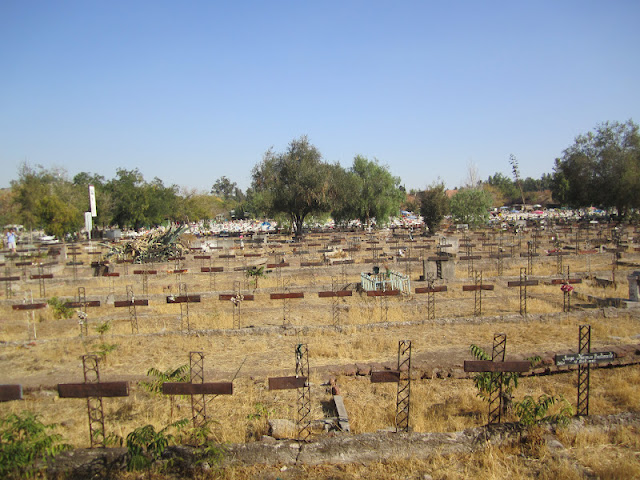the Cementerio General de Santiago is one of the largest cemeteries in South America, with 5 million "residents". there are as many people buried in this cemetery as there are living, walking the streets of Santiago
i haven't been to enough cemeteries in my life to accurately compare, but i was beyond impressed. think what you want, but this was a place i could see myself hanging out or just spending some quality alone time. how many people feel comfortable chillin in a graveyard? i'm not sure.
i was completely blown away as i walked from one section of this cemetery to another. the divide between social classes in Chile is already extremely obvious, and it was even more apparent walking through the land of the dead. the layout showed a sharp divide between the high upper class, upper class, middle class, lower middle class, and extreme poverty. this really got me thinking about how deep the lines have been drawn between the wealthy and the poor citizens of Chile, a social structure of death that still perpetuates through the living beings of this country and doesn't show any sign of significant change in the future
see for yourself.
upper class and upper middle class:
the tomb of Socialist president Salvador Allende. he committed suicide during the military coup of 1973 and his death is still mourned by many, as this marked the beginning of the 17 year dictatorship of Augusto Pinochet


lower middle class and the poor:
the grave of Chilean singer-songwriter and poet Victor Jara. he was a political activist and member of the Communist Party of Chile. after the coup of September 11, 1973 he was arrested, tortured, and shot to death by machine gun fire. his body was thrown into the streets of a población ("poor neighborhood") in Santiago and he is now a symbol for the struggle of human rights and justice across Latin America. although Victor Jara reached fame, he was buried with the poorest class of Chile because they are whose rights he fought for
 |
| my friend Lindsay tying her bracelet to the grave |
two things i learned about how the Cementerio General de Santiago operates:
1. una reducción ("a reduction") = the majority of the larger family mausoleums can hold up to 16 caskets. so what happens when the 17th family member kicks the bucket? the oldest member's remains are removed from their casket and placed in a smaller space so the newly deceased person can fit
2. grave renting = those who cannot afford to a buy a permanent plot of land for their dead loved-one instead have to resort to renting a grave site temporarily. when they can no longer afford to pay, 90 days later the dead person's remains are removed and their space is then rented out to another family





























No comments:
Post a Comment